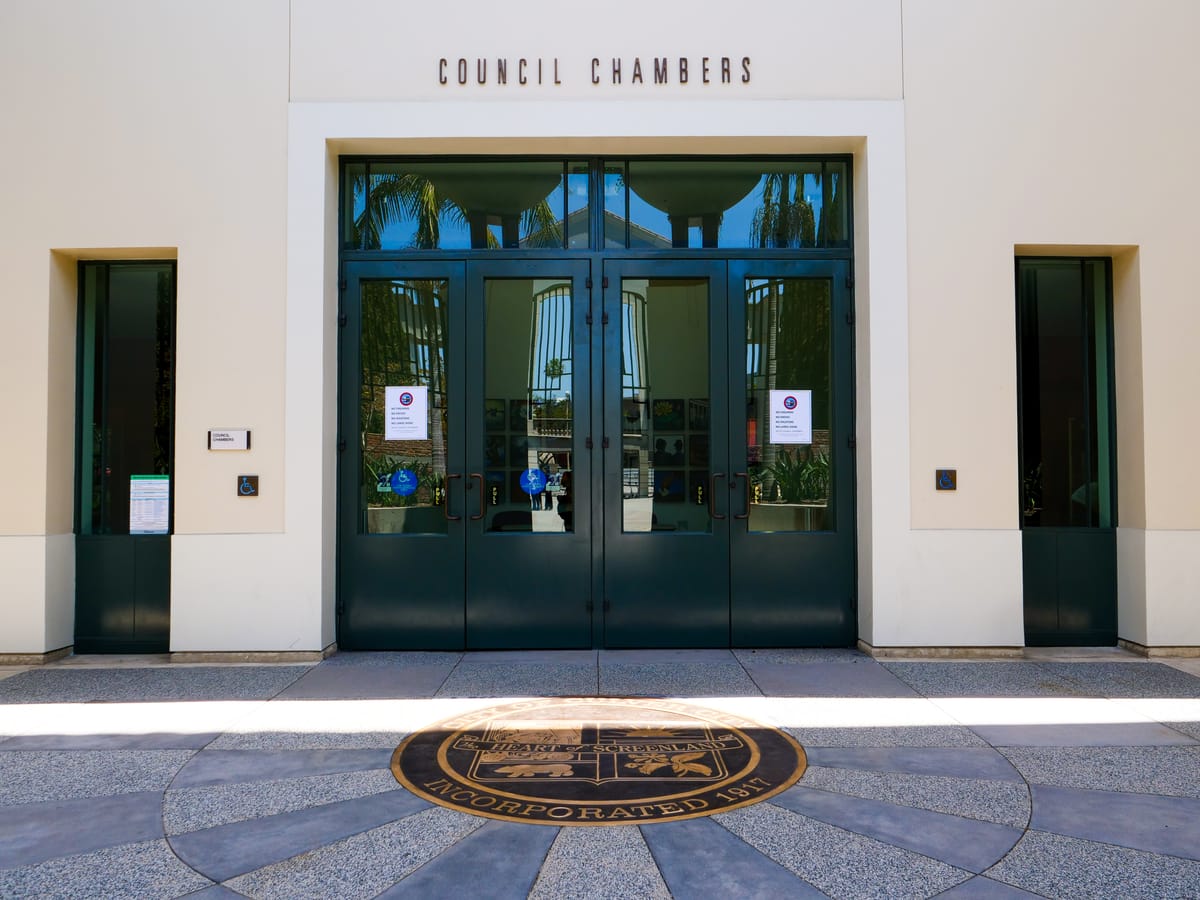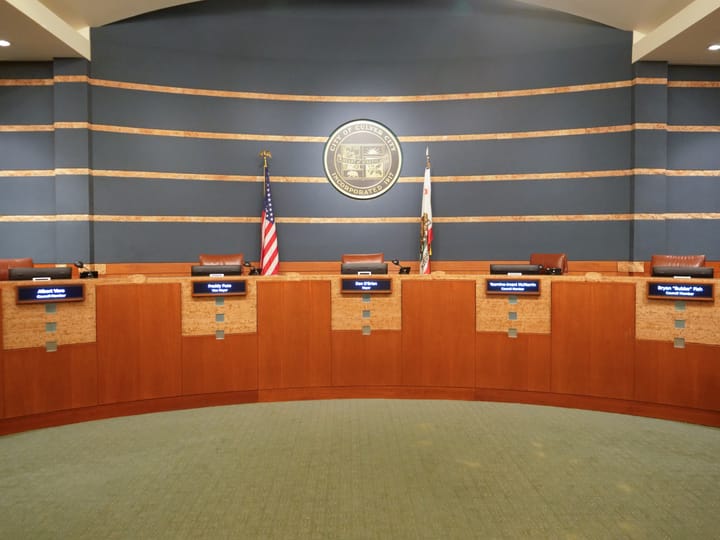City to allow single exit staircase in taller residential projects
The amendment to local Building Code is meant to help encourage the production of mixed use and affordable housing projects

Culver City took a unique step for California cities in its efforts to fight the housing crisis.
The Culver City City Council approved an ordinance that amends the city's Building Code to permit residential buildings up to six stories or five residential stories in height to be constructed with a single exit staircase. The current standard in Los Angeles and California requires two exit staircases for tall multi-family developments, but the council has moved to ease this requirement to encourage more mixed-use and affordable housing development.
This amendment also includes requirements for safety features for these buildings, such as a complete sprinkler system conforming to the standards outlined by the National Fire Protection Association (NFPA), a manual fire alarm system with smoke detectors, and internal pressurization in stairways and elevators for smoke control in the event of a fire.
The concept of a single exit staircase policy was introduced to Culver City by Livable Communities Initiative (LCI), which suggested several amendments that were incorporated into the ordinance on Monday night. LCI is a grassroots initiative group of advocates with knowledge and professional experience in urban design, with Thomas Small, former Mayor of Culver City, serving as one of its co-founders.
Several cities, including Seattle and New York, have similar single-stair exit codes in place. The nonprofit Pew Charitable Trusts published a report earlier this year, attesting to the safety of single-stair exit buildings in these cities.
"From 2012 to 2024, fire death rates in modern single-stairway four-to-six-story apartment buildings in New York City were no different from those in other residential buildings," the report published Feb. 27 reads. "Not one death in which the exit (or lack of a second exit) played a role was recorded in a modern four-to-six-story single-stair building in Seattle or New York City during that same 12-year period."
Designs utilizing this code amendment will also be required to enable access to the building by aerial ladders from rescue vehicles. While only a single stairwell will be mandated, the inclusion of multiple exits, including one dedicated to residential use, will be required as part of this amendment.
Much of the deliberation at Monday's meeting regarding the ordinance centered on the requirement for elevators. The effort to introduce this code amendment has been a bipartisan one, initiated by Councilmember Albert Vera in 2022 and supported by Councilmembers Bubba Fish and Yasmine-Imani McMorrin through their roles on the City Council Subcommittee on Housing and Homelessness.
Culver City Fire expressed some concerns at the Sept. 9 meeting during discussions about this amendment. Fire Chief Kenneth Powell explained Monday night that he was concerned about the ability to transport large pieces of life-saving equipment, such as heart monitors, oxygen tanks, and suction devices, to higher floors and to evacuate patients in critical situations, given the requirements this ordinance would implement.
"It would [be] extremely difficult to manage a patient and bring them down six flights of stairs without an elevator," Powell said Monday.
To alleviate these concerns, Mayor Dan O'Brien suggested introducing a requirement for elevators to be included in developments with a single staircase. While he wasn't adverse to the concept, Fish argued that making a decision that would be locked in for several years without data was a reckless one that could lead to consequences down the road.
The decision to pass this ordinance as an urgency ordinance was made Monday night to meet the Oct. 1 deadline set by AB 130, which prevents amendments to building codes until June 1, 2031. He was concerned that the potential costs associated with an elevator could dilute units or decrease the affordability of projects. Instead, he suggested a conversation be held about the requirements for elevators in projects throughout the city.
"We don't know what the impact will be of having one type of building with elevator requirements and having this other type of building not have requirements," Fish said. "My fear is that we might be diluting the purpose [of this]."
Including elevators immediately in this context was a matter of safety and accessibility, Vera and O'Brien argued. Elevators would help enable firefighters and paramedics to transport the large equipment Chief Powell mentioned and create a more practical evacuation path for seniors, physically disabled residents or guests, and those experiencing medical emergencies on higher floors.
LCI proposed a compromise that was agreed upon by the council in a unanimous vote: including an elevator requirement, but only for buildings that are more than four stories high. Developers tend to include elevators in taller buildings to enhance the appeal of units on higher floors to potential residents, according to Morgan.
"I, as an avid cyclist, nor the mayor, as an avid runner, would probably not want to live in a six-story walkup," Morgan said. "Just simply from marketability, we have not seen developers want to build at that height without an elevator."
Another concern was the potential for taller buildings in areas meant for single-family housing, known as R1 zones. O'Brien hoped to solidify his intent for this update as a means to enable and encourage mixed-use development in commercial zones by including the requirement to stay out of R1 zones in Monday's motion.
"I think the intent is mixed use," Culver City Planning and Development Director Mark Muenzer said, "but these buildings could be all residential."
Culver City's most recent Zoning Code changes focused on dramatically expanding the zones in the city where this type of development is allowed as a means to help generate revenue for a General Fund needing supplementation and an affordable housing stock not yet to the standards set by the State's Regional Housing Needs Assessment (RHNA).
Decisions related to location could not be made as part of Monday night's decision because the code update was part of the building code, while regulations related to where developers can build projects are found in the Zoning Code. However, it was noted that while there were no prohibitions on these developments in single-family neighborhoods, buildings in R1 zones would still need to conform to the limitations of the zone, even if taller structures are allowed by this building code change.
"R1 density would not support a building of this size," Travis Morgan, who presented to the council on behalf of LCI, said at the meeting. Morgan is also a former Culver City Bicycle and Pedestrian Advisory Committee member, having termed out last year.
Despite the city classifying this as an urgency ordinance to meet the Oct. 1 deadline for California Building Code changes outlined in AB 130, the amendment will not be implemented until it is reviewed by the State or the State's building code is amended to legalize the move statewide.
AB 835 lends itself to the latter purpose, requiring the State Fire Marshal to "research standards for single-exit, single stairway apartment houses, with more than two dwelling units, in buildings above three stories and provide a report to specified legislative committees and to the California Building Standards Commission by Jan. 1, 2026."




Comments ()